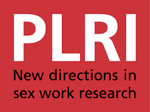A news story in the Asia Sentinal by Geeta Seshu, 25 May 2011.
They can make more money and live better.
Poverty and limited education push females into labor markets at an early age, but the sheer desire for a better income and a better life pushes them into sex work, according to a path-breaking, pan-India survey of sex workers.
Only about 20 percent of the women surveyed were forced, sold, cheated or otherwise pushed into sex work according to the study, which was conducted in 2009 and only recently released. Nearly 80 percent of the 3,000 females surveyed in 14 states across the country entered sex work by themselves. The higher incomes and livelihoods they could access weighed significantly in that decision. The harsh fact is that for many women, working conditions are cruel or incomes are disastrously low in other labor markets, the survey categorically revealed.
“Sex work as work should be placed in the context of women’s choice rather than our own understanding or preferences,” said economist Rohini Sahni, who released the preliminary findings of the survey in Mumbai.
In the post-HIV context, hygiene or control of the ‘high risk’ population dominates surveys of sex workers, but there was no information on the economic aspects of their work, Sahni said.
Sahni and V. Kalyan Shankar of Pune University’s Department of Economics analysed the data emerging from the survey, which was conducted under the aegis of the Centre for Advocacy on Stigma and Marginalisation (CASAM) as part of the Paulo Longo Research Initiative (PLRI) on sex work research.
The women who participated in this unique survey come from different backgrounds, ages, language, cultures and states as diverse as Andhra Pradesh, Assam, Bihar, Goa, Nagaland, Uttar Pradesh, and so on. More than 35 civil society organizations and individuals fanned out to administer a questionnaire to the sex workers, chosen in areas where they were not collectivized so as to preclude any influence in the responses.
What they found was that poverty and limited education push women into the labor force at early ages and sex workers are no exception. While 60 percent were from rural family backgrounds and 65 percent from poor family backgrounds – 26 percent are of middle class origins. Half of them had no schooling while the educational levels of the others were seven percent (primary schooling up to Class Four), 13.4 percent (secondary schooling up to Class Seven), 6.5 percent (up to Class Ten) and 11.3 percent (up to Class Twelve).
The percentages of those who were forced (7.1), sold (2.8), cheated (9.2) or were ‘devadasis’ (0.6), as against the 79.4 per cent who said that they entered sex work of their own volition, was an interesting indicator of the ‘force’ versus ‘choice’ debate in many discussions on sex work.
“There is a lot of misinformation on this issue because of our obsession with trafficking. Very few women are forced into sex work but the public narrative is overwhelmingly that of force,” said anthropologist Professor Andrea Cornwall of the University of Sussex, UK, who is part of PLRL, a global network of academics and activists engaged in research on sex work.
The findings of such a survey would give recognition to the labour of women in sex work as well as start a discourse on their working conditions – a precursor to determining their rights, Prof. Cornwall added.
Of the 3,000 women surveyed, 1,158 said that they had entered sex work directly, 1,488 said they had experience of other labor markets before or alongside sex work, while 326 had other work identities but the sequence of their entry was not known. Sahni, unscrambling the data, revealed that the sex workers listed a range of activities they did before getting into sex work: Puri and papad-making, domestic work, tailoring, working in beauty parlors, doing agricultural labor or construction labor, or peddling anything from bangles to socks to fruit and vegetables.
Asked why they left their earlier occupations, the predominant response was economic: Low pay, no profit in business, no regular work, insufficient money to run the home. The harassment and harsh working conditions they faced as unorganized laborers, coupled with insufficient income, made them consider sex work as a more economically rewarding option, according to Sahni.
Respondents said they made incomes between Rs 500-1,000 per month (US$1=Rs 44) in other labor markets. They revealed that there was an immediate jump when they came into sex work, citing incomes ranging from Rs 1,000-3,000, with a substantial number saying they earned anything between Rs 3,000-5,000.
Interestingly, an examination of the categories of those forced/sold/cheated or involving an element of abuse was roughly similar across those who entered sex work directly and those who entered after working in other labor markets, at 22.1 percent and 24.8 percent, respectively. However, those sold were much higher in the category of direct entrants, and the agents involved in this abuse were husbands, lovers, friends and acquaintances.
Another interesting aspect emerging from the preliminary analysis of the data was that 60.27 percent of women who entered the profession were in the 19-22 age group. While some of them may later go on to work in other labor markets (at 23-26 years of age), the females from other labor markets who enter into sex work do so at 19-22 years, with others in the 23-26 year or 27-30 year age groups.
The survey yielded a rich store of data, but more number crunching and analysis are required to determine trends related to sexuality, abuse, stigma, migration patterns for the female, male and transgender sex workers. But, as Sahni put it, at least some middle ground can be established to address the reality of sex work and demystify simplistic and stereotypical narratives about it.

